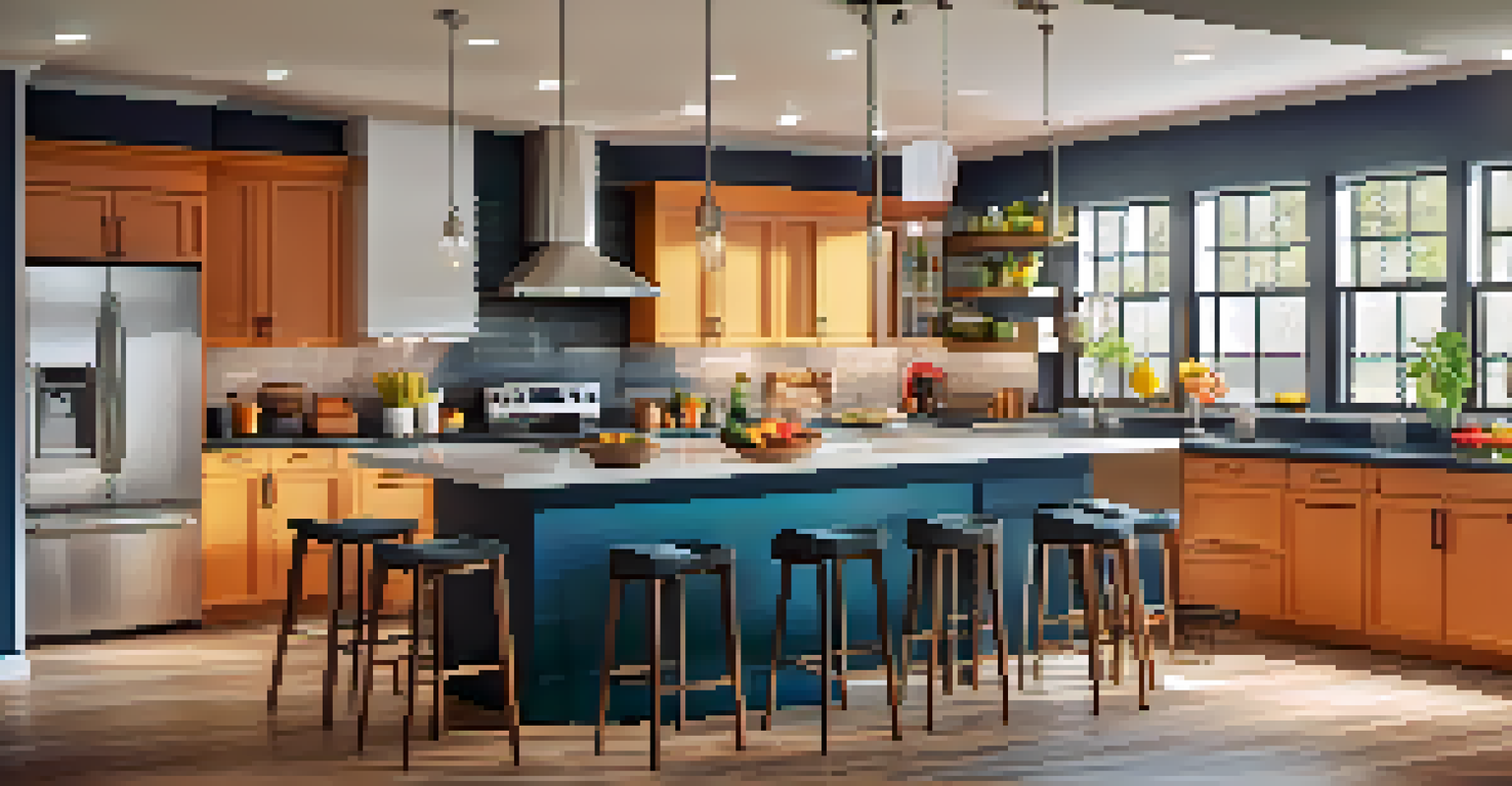Exploring FHA 203(k) Loans for Home Renovations Explained

What Are FHA 203(k) Loans and How Do They Work?
FHA 203(k) loans are a special type of mortgage designed specifically for home renovations. They allow homeowners to borrow money not only for the purchase of a property but also for the cost of improvements. This means you can buy a fixer-upper and finance its renovation all in one loan, making it a popular choice for many buyers.
Home is not a place, it's a feeling.
These loans are backed by the Federal Housing Administration (FHA), which means they have more lenient qualification requirements compared to conventional loans. For instance, you may be able to secure a loan with a lower credit score, making homeownership more accessible. This is particularly beneficial for first-time buyers who might be overwhelmed by traditional financing options.
The process involves working with an approved lender and creating a detailed plan for renovations, which must be completed within six months. This timeline ensures that your home not only gets the updates it needs but also increases its value, making it a win-win situation for your investment.
Types of FHA 203(k) Loans: Streamlined vs. Standard
There are two main types of FHA 203(k) loans: Streamlined and Standard. The Streamlined option is ideal for smaller projects, allowing you to borrow up to $35,000 for non-structural repairs. This could include things like painting, flooring, or kitchen upgrades, making it a great choice for those looking to refresh their home without a major overhaul.

On the other hand, the Standard FHA 203(k) loan is meant for more extensive renovations that may involve structural changes. This could be anything from adding a new room to a complete home remodel. With the Standard option, you can borrow significantly more, but you'll also need to provide detailed plans and hire a consultant to oversee the project.
FHA 203(k) Loans Simplify Renovations
These loans allow you to finance both the purchase and renovation of a home in one mortgage.
Choosing between these options depends on the scope of your renovation needs. If you're simply looking to spruce things up, the Streamlined version might be all you need; but if you're ready for a major transformation, the Standard option will give you the flexibility to make bigger changes.
Benefits of FHA 203(k) Loans for Home Buyers
One of the biggest advantages of FHA 203(k) loans is their accessibility. Because they're backed by the FHA, they cater to buyers who might struggle with the requirements of conventional loans. This makes it easier for first-time homebuyers or those with less-than-perfect credit to take the plunge into homeownership.
The best way to predict the future is to create it.
Additionally, these loans can significantly increase the value of a property. By financing renovations, you not only create a more enjoyable living space but also boost your home's marketability. This can be especially beneficial if you're planning to sell in the future, as buyers often seek updated homes.
Lastly, FHA 203(k) loans can help streamline the renovation process. By bundling the purchase and renovation costs into one loan, you avoid the hassle of securing multiple forms of financing, making your home buying experience smoother and more efficient.
Understanding Eligibility Requirements for FHA 203(k) Loans
To qualify for an FHA 203(k) loan, you need to meet certain eligibility criteria. Generally, you'll need a credit score of at least 500, though some lenders may require a higher score for the best rates. This leniency makes it easier for many to pursue their renovation dreams without the stress of traditional financing hurdles.
Another important factor is the debt-to-income (DTI) ratio, which measures your monthly debt against your income. Most lenders prefer a DTI of 43% or less, though some may allow for higher ratios depending on your overall financial situation. This ensures that you can manage your mortgage payments along with other financial obligations.
Two Types: Streamlined and Standard
The Streamlined option is for smaller projects, while the Standard option accommodates larger, structural renovations.
Lastly, the property itself must meet specific requirements to qualify for an FHA 203(k) loan. It should be a primary residence and meet certain safety standards. Understanding these eligibility requirements will help you navigate the application process more smoothly and increase your chances of approval.
The Application Process for FHA 203(k) Loans
Applying for an FHA 203(k) loan involves several steps, starting with finding a lender experienced in these types of loans. This is crucial, as not all lenders offer FHA 203(k) financing, and you want someone who understands the nuances of the process. Once you have a lender, you'll need to gather your financial documents and complete the application.
Next, you'll work with your lender to determine the scope of your renovation project. This will involve creating a detailed plan that outlines the improvements you want to make, along with estimated costs. Your lender will then assess this plan to determine how much you can borrow, which is pivotal for moving forward.
Once your application is approved, the fun begins! You'll be able to start your renovations, but it's important to keep the timelines in mind. The work must be completed within six months of closing on the loan, so having a solid contractor and project plan is essential to ensure everything stays on track.
Costs and Fees Associated with FHA 203(k) Loans
While FHA 203(k) loans offer many advantages, it's important to be aware of the associated costs and fees. These loans typically come with closing costs that can range from 2% to 5% of the loan amount. This means budgeting for these expenses upfront is crucial to avoid financial strain later on.
In addition to closing costs, there may be renovation-related fees, such as hiring a consultant for Standard 203(k) loans. This consultant will help oversee the project, which can add to your overall costs but ultimately ensures your renovations are completed to standard. It's a small investment for peace of mind and quality assurance.
Accessibility for First-Time Buyers
FHA 203(k) loans have more lenient qualification requirements, making homeownership easier for those with lower credit scores.
Lastly, keep in mind that FHA 203(k) loans require mortgage insurance premiums (MIP) as part of the financing. This is a standard requirement for FHA loans and adds to your monthly payments. Understanding these costs will help you plan your budget effectively and make informed decisions about your renovation project.
Tips for a Successful FHA 203(k) Renovation Experience
To ensure a smooth FHA 203(k) renovation experience, start by doing thorough research. Familiarize yourself with the loan process, seek out qualified contractors, and get multiple quotes to find the best fit for your budget and needs. This groundwork can save you headaches and help you avoid costly mistakes down the road.
Communication is key throughout the renovation process. Regularly check in with your contractor and lender to stay updated on progress and any potential issues that may arise. This proactive approach can help you tackle challenges quickly and keep your project on schedule.

Lastly, stay flexible and open-minded. Renovations can sometimes lead to unexpected surprises, whether it's a hidden structural issue or a delay in supplies. Being adaptable and ready to work through these challenges will ultimately lead to a more successful and enjoyable renovation experience.